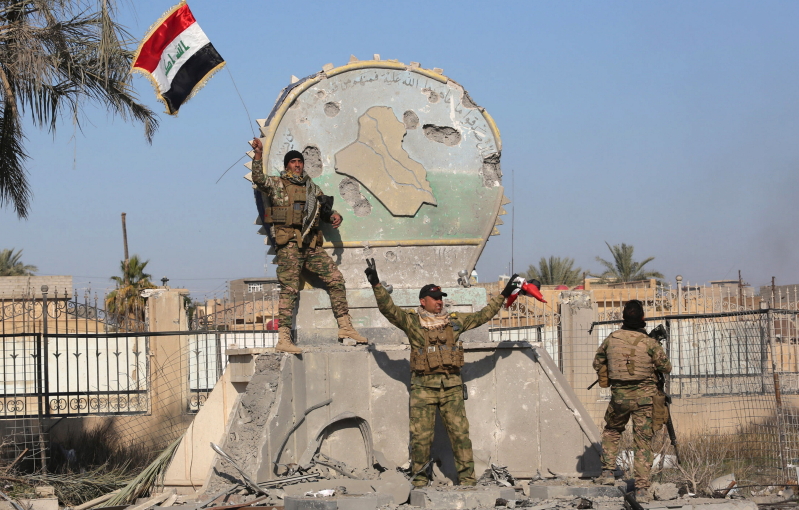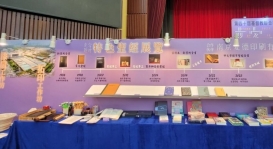
About 700 Islamic State fighters are believed to be hiding in the center and eastern outskirts of Ramadi days after Iraqi forces claimed victory over the militants in the western city, the U.S.-led coalition said on Wednesday.
Much of the center of the Anbar provincial capital still needs to be cleared of explosives laid by the jihadist insurgents who had seized the city in May, the coalition said. That will delay the return of tens of thousands of civilians who fled to Baghdad and other parts of Iraq.
After months of cautious advances backed by coalition air strikes, the Iraqi army retook Ramadi on Sunday in its first big victory against the hardline Sunni Islamists who swept through a third of Iraq in 2014.
"Within what we call central Ramadi they estimate still up to 400 Daesh (Islamic State) members and then once you go east of that toward Falluja you've got about 300 out there in that direction," U.S. Army Captain Chance McCraw, a coalition intelligence officer, told reporters in Baghdad.
"In central Ramadi, the house-borne IED (improvised explosive device) continues to be a threat even once CTS (counter-terrorism service) goes through and that's why you don't see civilians moving back into various areas," he added.
Prime Minister Haider al-Abadi on Wednesday ordered the immediate formation of a high-level committee including the Anbar governor and senior federal government officials to stabilize and rebuild Ramadi.
He urged the immediate removal of explosives and the restoration of basic services to allow the safe return of civilians to their homes.
The United Nations estimates initial reconstruction needs in Ramadi require about $20 million, but the longer term costs are likely to be much greater for a city battered by U.S. air strikes and Islamic State explosives over the past six months.
The trade ministry said it was preparing to send emergency food aid to Ramadi.
HOLDING LAND
Some areas of Ramadi are littered with explosives.
McCraw said that in one of the more heavily defended areas, Iraqi forces had found about 300 explosives planted along a 150 m (150 yard) stretch south of the main government complex. After clearing that area, they found more bombs scattered every 50 m or so, he said.
Nearly 1.4 million people have been displaced from all of Anbar province, according to U.N. estimates. The Iraqi government says most civilians fled Ramadi before it launched its assault on the city, which formerly had a population of more than 400,000.
McCraw and other coalition officials declined to estimate how long it would take Iraqi forces to clear the rest of the areas. They said a few hundred members of the Anbar police had arrived to help hold areas cleared by the better trained and equipped counter-terrorism forces, which spearheaded the Ramadi offensive.
Baghdad has said Sunni tribal fighters would make up the main holding force in Ramadi, a role played in other areas taken from Islamic State by mainly Iranian-backed Shi'ite armed groups which have been held back from Ramadi for fear of stoking sectarian tensions.
Such a strategy would echo the U.S. military's "surge" campaign of 2006-2007, which relied on recruiting and arming Sunni tribal fighters against al Qaeda, Islamic State's precursor.
Anbar, including Ramadi, was a focus of that campaign at the height of the 2003-2011 U.S. war in Iraq.
While the earlier Sunni tribal force numbered in the tens of thousands, only a few thousand fighters have so far been prepared to operate in Ramadi this time.
The coalition, which includes European and Arab nations, has been waging an air campaign against Islamic State positions in both Iraq and Syria since mid-2014. It said its advisers were not on the ground in Ramadi but had provided training and equipment to Iraqi forces.





![[Exclusive] Rev. Dr. Richard Tin-Wo Cheung: walking between “charismatic” and “evangelical”](https://www.gospelherald.com/media/cache/thumbnail/7/23/72338sp_273w_150h_1x_1y.jpg)

